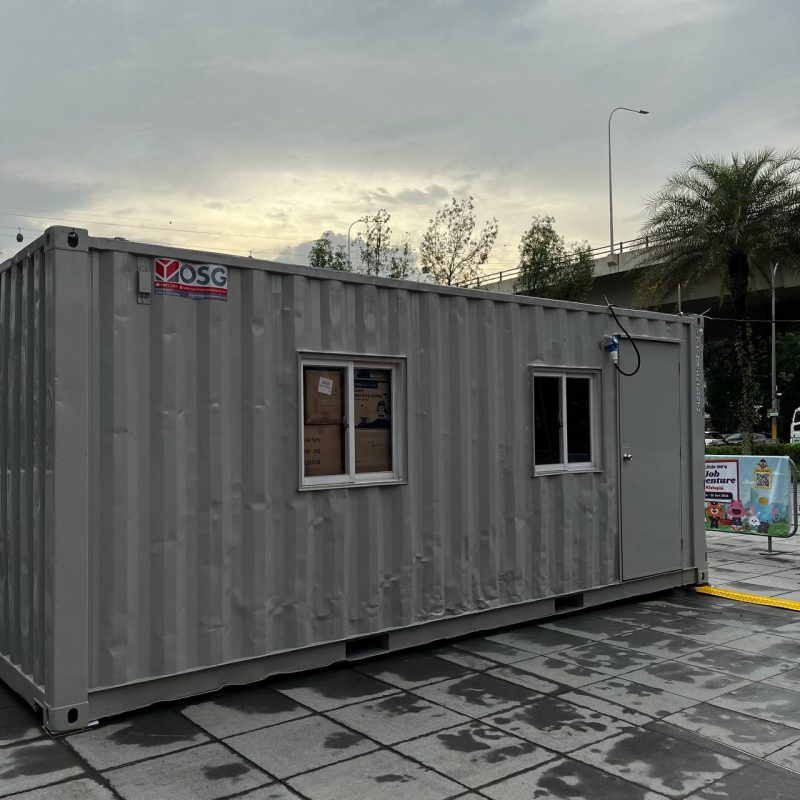Shipping Container Architecture: Inspiring Designs and Projects

In recent years, shipping container architecture has emerged as a bold and sustainable trend in modern construction. This innovative approach takes decommissioned shipping containers and repurposes them into a variety of structures, from homes and offices to restaurants and pop-up shops. Not only does this method reduce waste, but it also offers a unique aesthetic and a high level of flexibility in design. In this article, we’ll explore some of the most inspiring shipping container architecture designs and projects that showcase the potential of this versatile building material.
The Rise of Shipping Container Architecture
The origins of shipping container architecture can be traced back to the need for affordable and sustainable housing. With millions of containers sitting idle in ports worldwide, architects saw an opportunity to give these sturdy steel boxes a second life. Shipping containers are designed to withstand harsh weather conditions, making them an ideal foundation for resilient and durable structures.
As interest in eco-friendly and cost-effective construction grows, more architects and designers are turning to shipping containers as a key building block for creative projects. The movement has gained traction not only because of its environmental benefits but also due to the speed at which these structures can be assembled. In many cases, building with containers takes a fraction of the time compared to traditional construction methods.
Inspiring Shipping Container Designs
Here are a few notable projects that highlight the endless possibilities of shipping container architecture:
1. The Freitag Shop in Zurich, Switzerland
One of the most iconic examples of shipping container architecture is the Freitag shop in Zurich, which uses stacked containers to create a towering retail space. The building is made from 17 stacked containers, forming a striking vertical structure that stands out against the surrounding urban landscape. The Freitag shop is a symbol of sustainability, as it not only utilizes recycled materials but also promotes eco-friendly products.
The interior of the shop is as innovative as the exterior, with each container functioning as a display area for their products. The modular nature of the containers allows for flexibility in layout, which can be adapted to suit the shop’s needs. This project showcases how shipping containers can be used to create dynamic and functional spaces in retail environments.
2. The Nomad Living Guesthouse in South Africa
The Nomad Living Guesthouse is a stunning example of how shipping containers can be transformed into luxurious living spaces. Located in the South African countryside, this eco-friendly guesthouse is made entirely from repurposed shipping containers. The design incorporates large windows and sliding doors, allowing for natural light to flood the interiors and providing breathtaking views of the surrounding landscape.
The guesthouse features a minimalist design with a focus on sustainability. Solar panels, rainwater harvesting systems, and energy-efficient appliances are integrated into the structure, making it a self-sufficient and environmentally responsible retreat. This project illustrates how shipping containers can be used to create beautiful, comfortable, and eco-conscious living spaces.
3. The Boxpark in London, UK
Boxpark in London is a prime example of how shipping containers can be used to create temporary, flexible, and scalable commercial spaces. This pop-up shopping center is made entirely of shipping containers and houses a wide range of retail shops, restaurants, and cafes. The design allows for quick assembly and disassembly, making it ideal for short-term projects or seasonal markets.
Boxpark’s innovative use of shipping containers has inspired similar developments around the world, with pop-up shops and restaurants becoming increasingly popular in urban areas. The modular nature of containers makes them perfect for creating temporary, portable spaces that can be easily transported and reconfigured to suit different locations.
4. Container City in Mexico City, Mexico
Container City is a vibrant community space in Mexico City that showcases the versatility of shipping containers in urban environments. The project consists of a collection of containers that have been repurposed into cafes, shops, offices, and event spaces. The containers are arranged in a colorful and creative layout, with each container painted in bright, eye-catching colors.
Container City serves as a hub for local artists, entrepreneurs, and small businesses, offering affordable and flexible spaces for creative projects. This project highlights how shipping container architecture can foster community engagement and support local economies by providing affordable spaces for small businesses to thrive.
Why Shipping Container Architecture Works
Shipping container architecture offers several advantages over traditional construction methods. These include:
- Cost-effectiveness: Containers are relatively inexpensive to purchase, and the overall construction costs are often lower due to the reduced need for traditional building materials and labor.
- Sustainability: Repurposing shipping containers helps reduce waste and promotes recycling. Additionally, many container buildings incorporate energy-efficient technologies such as solar panels, rainwater harvesting, and natural ventilation.
- Durability: Shipping containers are built to withstand harsh environmental conditions, making them a durable option for construction in a wide range of climates.
- Flexibility: The modular nature of containers allows for endless design possibilities. Containers can be stacked, arranged, and combined in various configurations to create unique spaces.
- Speed of construction: Container structures can be assembled much faster than traditional buildings, making them an ideal solution for projects with tight timelines.
Conclusion
Shipping container architecture represents a fusion of creativity, sustainability, and practicality. The projects highlighted above demonstrate that these humble steel boxes can be transformed into remarkable spaces that push the boundaries of design. As the movement continues to grow, we can expect to see even more inspiring and innovative shipping container projects emerge around the world. Whether used for homes, offices, or public spaces, shipping containers offer a sustainable and flexible solution for modern architecture.

